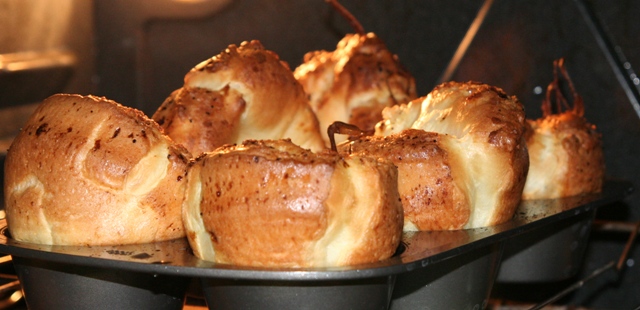I returned to the US a few weeks ago from a year living abroad in France as an exchange student, and it is interesting to be back. I am full of memories of the Mediterranean landscape and mes pensées often drift to the days that I spent biking up the Mont Ventoux and eating dinner with my host family, who thought that I was crazy for baking my own bread ("You call that bread?! That looks more like a moist brick to me!" my host dad would call out) and for biking 12 miles to get to school every day. I could ramble about my past year's experience for hours, but instead I'll spare you tales of coed bathrooms (that was a surprise...my first day of high school in France when I discovered that young men and women share les toilettes) and my first encounter with modern dance and write about something a little more related to this blog: the plight of my sourdough starter in France, and its revival aux Etats-Unis.
August 2009, my starter embarked for its first voyage out of the US. Packed in a tupperware container, and sheathed in multiple plastic bags labeled "sourdough starter for making bread" (I feared that the airport officials would confiscate my suspicious-looking container full of ooze), it boarded the flight at San Francisco. And many, many hours later, we arrived together in Montpellier, France. That would be the end of our amicable friendship. As the months went by, I would feed my starter with French (T 150) flour just as I had in America, however it seemed to become less and less responsive. On its fiestiest of days, bubbles the size of strawberry seeds would form; otherwise, the starter was about as active as my neighbor, who sat in front of the TV all day and complained that the day was too long. 24 heures- c'est trop longue! At least he had an excuse. He was in his eighties, whereas my starter was less than a year old. So, needless to say, my bread that i produced from the starter was quite dense and multiple times I had to make a loaf or two of yeast bread to raise my confidence in my bread-making abilities. Not that there's anything wrong with yeast-risen bread, but I had been trying for months to make good bread with my sourdough starter.
Here's what a typical slice of my 100% whole wheat bread that I made in France looked like:

(in the background you can see my sprouting avocado plant)
Needless to say, France was not too impressed by my bread baking skills. Oh, I exagerate. A few good loaves came out of that starter that had journeyed so far- in particular, one walnut loaf that I assume was tasty as I left it on the counter at a friend's house and when I went looking for it a few hours later, the loaf was gone and in its place was a dusting of crumbs.
July 2010- as I packed up my bags (the night before my flight), I wrapped up my starter, still in that same tupperware container, and this time labeled the bag with, "levain pour faire du pain/sourdough starter". This label was partially for airport security, and served in addition for the starter itself, who I think had forgotten that it was supposed to be a leavening agent and was considering itself instead as some sort of sauce bechamel gone rancid. Anyway, a few connecting flights and plane meals later, I arrived home. Home! After a year of struggling to remain a vegetarian in le pays du foie gras and a year of daily adventure, I was home. It was sad and nice at the same time. I immediately rummaged through my suitcase to verify that the levain hadn't been confiscated- and sure enough- it was still there! I fed it with some Stone Buhr flour (which my local supermarket doesn't carry anymore...darn!), and went off to visit my friends whom I hadn't seen for nearly a year. When i got back the next morning, I was blown away by the activity of my starter. It had actually doubled in size! And there were bubbles not the size of blackheads, but the size of popcorn kernels! Wow! I've been making bread since my return, and I have been more than satisfied with the results.
Here's a walnut loaf:

and here's a plain loaf:

that are both 100% whole wheat (of course).
I am puzzled by the inactivity of my starter in France- the only possible hypothesis is that my starter simply didn't pick up the French language like I did, and so the American yeasts were unable to communicate with the French yeasts. Sacre bleu! In any case, my starter is thriving and well back on top of the microwave at home, and the bread is much lighter and tastier. And thanks to Minioven- who instructed me to "clean the cage" when it comes to feeding a starter. I had posted a blog back when I was in France complaining about the sluggishness of my starter, and she emphasized the importance of dumping out half of the starter at each feeding, and increasing the amount of flour that I was nourishing my starter with. I think that these two pieces of advice have helped a lot.








